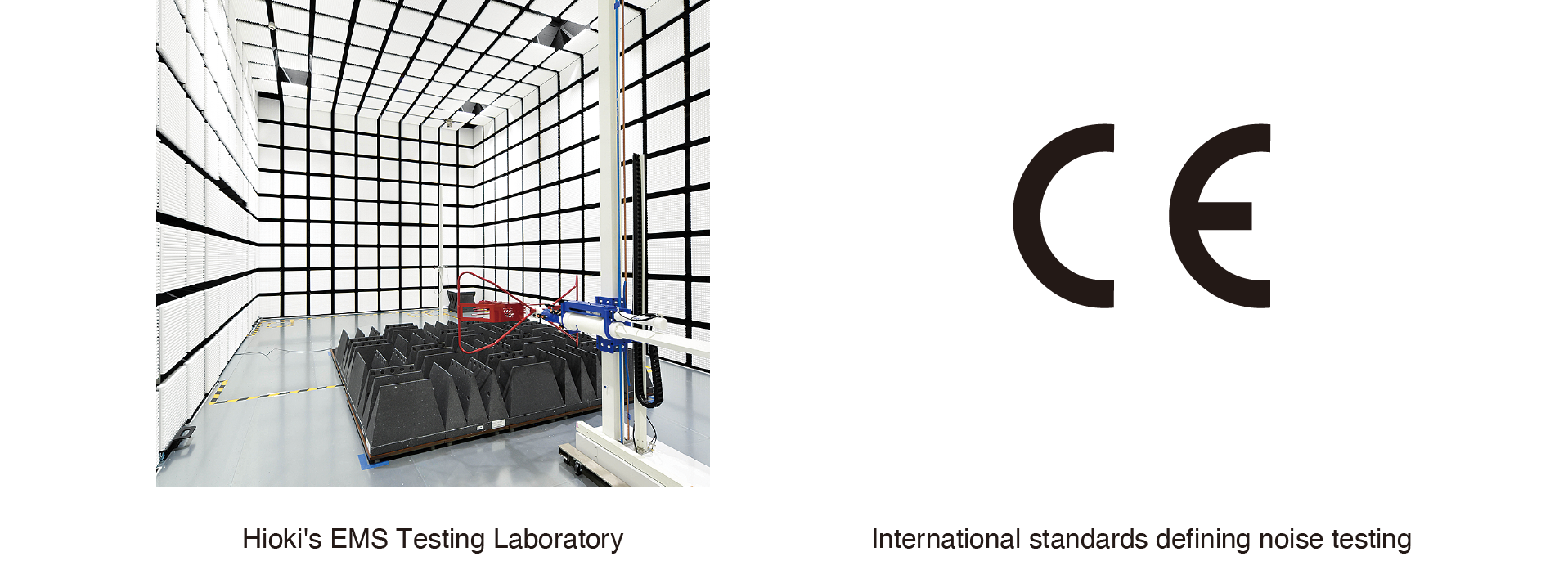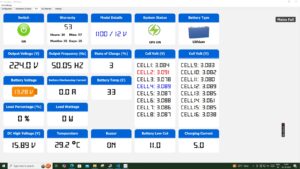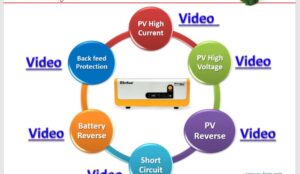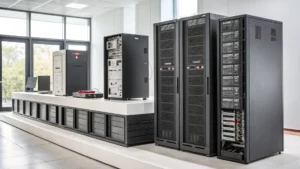[av_heading heading=’Li-ion Battery Production Process’ tag=’h3′ style=’blockquote modern-quote’ subheading_active=” show_icon=” icon=’ue800′ font=’entypo-fontello’ size=” av-medium-font-size-title=” av-small-font-size-title=” av-mini-font-size-title=” subheading_size=” av-medium-font-size=” av-small-font-size=” av-mini-font-size=” icon_size=” av-medium-font-size-1=” av-small-font-size-1=” av-mini-font-size-1=” color=” custom_font=” subheading_color=” seperator_color=” icon_color=” margin=” margin_sync=’true’ padding=’10’ icon_padding=’10’ headline_padding=” headline_padding_sync=’true’ link=” link_target=” id=” custom_class=” template_class=” element_template=” one_element_template=” av_uid=’av-luwf35wh’ sc_version=’1.0′ admin_preview_bg=”][/av_heading]
[av_textblock textblock_styling_align=” textblock_styling=” textblock_styling_gap=” textblock_styling_mobile=” size=” av-medium-font-size=” av-small-font-size=” av-mini-font-size=” font_color=” color=” id=” custom_class=” template_class=” element_template=” one_element_template=” av_uid=’av-luwf6fq5′ sc_version=’1.0′ admin_preview_bg=”]
Lithium-ion Battery Production and Testing, Learn how Li-ion battery inspection/testing in each production process

Lithium-ion Battery Production and Testing
-
Mixing:-
Active materials, conductive auxiliary agents, polymer binders, and organic solvents are mixed to form an electrode slurry.
-
Coating, Drying, and Calendering:-
The electrode slurry is coated to copper and aluminum foil, dried, and calendared.
-
Slitting:-
The electrode sheets are slit to each battery size.
-
Winding or Stacking:-
A separator is inserted between the anode and cathode electrode sheets, and the electrode sheets are wound or stacked together.
-
Tab Welding:-
The tabs of the layered electrode sheets are welded together, and collectors are welded to the tabs.
-
Terminal Welding:-
The covers and collectors are welded together.
-
Assembly:-
-
Case Closing:-
The covers and cases are welded together.
-
Before Filling:-
-
Electrolyte Filling:-
The electrolyte is filled via the electrolyte port.
-
After Filling:-
The electrolyte port is closed.
-
Pre-charging:-
Following electrolyte fill, a charging current is fed to the cells for the first time.
-
Charging and Discharging:-
The cells are repeatedly charged and discharged.
-
Aging :-
The cells are stored for a certain period.
-
Pre-shipment inspection:-
Quality is tested before shipment.
[/av_textblock]
[av_heading heading=’Li-ion Battery Inspection and Testing Methods’ tag=’h3′ style=” subheading_active=” show_icon=” icon=’ue800′ font=’entypo-fontello’ size=” av-medium-font-size-title=” av-small-font-size-title=” av-mini-font-size-title=” subheading_size=” av-medium-font-size=” av-small-font-size=” av-mini-font-size=” icon_size=” av-medium-font-size-1=” av-small-font-size-1=” av-mini-font-size-1=” color=” custom_font=” subheading_color=” seperator_color=” icon_color=” margin=” margin_sync=’true’ padding=’10’ icon_padding=’10’ headline_padding=” headline_padding_sync=’true’ link=” link_target=” id=” custom_class=” template_class=” element_template=” one_element_template=” av_uid=’av-luwfesxs’ sc_version=’1.0′ admin_preview_bg=’rgb(255, 255, 255)’][/av_heading]
[av_textblock textblock_styling_align=” textblock_styling=” textblock_styling_gap=” textblock_styling_mobile=” size=” av-medium-font-size=” av-small-font-size=” av-mini-font-size=” font_color=” color=” id=” custom_class=” template_class=” element_template=” one_element_template=” av_uid=’av-luwfhgo2′ sc_version=’1.0′ admin_preview_bg=”]
Li-ion Battery Inspection and Testing Methods:-
Lithium-ion battery inspection and testing methods encompass various techniques employed throughout the manufacturing process to guarantee safety, performance, and quality. These methods can be broadly categorized into two sections: Inspection and Testing.
- Focus on physical integrity and dimensional accuracy during cell assembly.
- Often non-destructive, allowing the battery to proceed through the production line.
Common Inspection Techniques:
- Visual Inspection: Human inspectors examine for defects like misalignments, debris, or external damage to the cell casing.
- X-Ray Inspection: X-rays penetrate the cell casing to reveal internal defects like mispositioned electrodes, foreign objects, or internal shorts. Different X-ray techniques like CT scanning can provide detailed 3D information about the cell’s internal structure.
- Dimensional Measurements: Automated systems precisely measure the size and shape of cell components to ensure they meet design specifications for proper assembly.
Testing Techniques:
- Evaluate the electrochemical performance and safety characteristics of the battery.
- May be destructive in some cases, particularly during safety testing.
Common Testing Techniques:
- In-Line Testing: Performed throughout production to catch defects early on. Examples include:
- Compression Testing (Electrodes): Measures electrode density and consistency for optimal electrolyte flow.
- Friction Testing (Cell Layers): Assesses adhesion between layers for proper electrical conductivity and to prevent delamination.
- Leakage Detection: Identifies any breaches in the cell casing to prevent potential electrolyte leaks, which are safety hazards.
- Weld Quality Testing: Verifies the strength and integrity of welds that connect battery components. Poor welds can lead to increased resistance and performance issues.
- End-of-Line Testing: Performed after cell formation to assess overall functionality and safety. Examples include:
- Capacity Testing: Measures the battery’s ability to store electrical charge by fully discharging and recharging it. This determines the usable energy storage capacity.
- Performance Testing: Evaluates factors like voltage, current, and power output during charge and discharge cycles to ensure the battery meets performance benchmarks.
- Internal Resistance Testing: Measures the resistance within the cell, which can impact efficiency and heat generation. High resistance can lead to overheating and safety risks.
- Overcharge/Over-discharge Testing: Simulates extreme conditions to assess the battery’s behavior and identify potential safety concerns under stress.
- Thermal Abuse Testing: Exposes the cell to controlled temperature extremes to evaluate its stability and response to heat. This ensures the battery won’t fail catastrophically in high-temperature environments.
Additional Considerations:
- Testing Standards: Manufacturers adhere to industry standards and regulations set by organizations like UL (Underwriters Laboratories) and IEC (International Electrotechnical Commission). These standards ensure battery safety and performance meet specific criteria.
- Data Analysis: Test data is meticulously analyzed to identify trends or anomalies. This helps manufacturers identify potential issues early on and continuously improve the production process.
What is insulation resistance testing of lithium-ion batteries?
In lithium-ion battery production, insulation resistance testing is a specific type of quality control check performed to assess the integrity of the insulation between the electrodes and other internal components. Here’s a breakdown of its purpose and how it’s conducted:

Lithium-ion Battery Production and Testing
Purpose:
- Detecting Defects: This test aims to identify any defects in the battery’s internal insulation that could lead to electrical leakage currents. These leakage currents can cause inefficiency, reduced battery performance, and in extreme cases, pose a safety risk due to overheating.
- Early Detection: By performing this test during the manufacturing process, especially before the electrolyte is filled, manufacturers can catch these issues early on and prevent defective cells from moving further down the production line.
How it Works:
- Measuring Resistance: Insulation resistance testers are used. These instruments apply a DC voltage between specific points in the cell and measure the resulting current. Since good insulation should have minimal current flow, a high measured resistance value indicates good insulation. Conversely, a low value indicates a potential defect allowing current leakage.
- Test Points: There are two primary points where insulation resistance is measured:
- Between Electrodes (Before Electrolyte Filling): Here, the tester measures the resistance between the anode and cathode directly. This helps identify issues like presence of foreign objects or damage to the separator that could cause internal shorts.
- Electrodes and Enclosure (After Electrolyte Filling): Once the electrolyte is filled, the tester measures the resistance between each electrode and the cell enclosure. This ensures there are no shorts between the electrodes and the casing, which could also lead to safety hazards.
Lithium-ion Battery Production and Testing
Benefits:
- Improved Quality Control: Insulation resistance testing helps identify and eliminate defective cells, leading to a higher overall quality of produced batteries.
- Enhanced Safety: By catching potential leakage issues early on, this test contributes to the safety of the final battery product.
- Early Cost Savings: Identifying defects early in production prevents them from being discovered later, potentially saving on re-work or scrapping costs.
Limitations:
- Destructive for Later Stages: While the test before electrolyte filling is non-destructive, the test after filling might involve puncturing the casing for a direct connection, making the cell unusable.
- Not a Guarantee: A passing insulation resistance test doesn’t guarantee a perfect battery, but it’s a valuable indicator of overall internal integrity.
When to test insulation resistance?
Insulation resistance testing in lithium-ion battery production is conducted at two specific stages:

Lithium-ion Battery Production and Testing
1. Before Electrolyte Filling:
This is the earliest and most crucial point for insulation resistance testing. Here’s why:
- Catching Defects Early: At this stage, the cell doesn’t contain the electrolyte yet. This allows direct measurement of resistance between the anode and cathode. Any presence of foreign objects, contamination, or damage to the separator can be identified before the electrolyte complicates the process.
- Non-Destructive Testing: The test can be performed without harming the cell. This allows potentially good cells to proceed further in the manufacturing process.
2. After Electrolyte Filling:
While less common, insulation resistance testing can also be done after the electrolyte is filled:
- Verifying Enclosure Integrity: In this case, the tester measures the resistance between each electrode and the cell enclosure. This ensures there are no shorts between the electrodes and the metal casing, which could lead to safety hazards.
- Potentially Destructive: This test might require puncturing the cell casing to create a direct connection for measurement. This can render the cell unusable. Due to this, it’s usually performed only on a sampling basis or if other quality control checks raise concerns.
Lithium-ion Battery Production and Testing
How to measure insulation resistance?
Measuring insulation resistance in Lithium-ion batteries requires specific equipment and careful procedures to ensure accurate results and avoid damaging the cells. Here’s a breakdown of the process:
Equipment:
- Insulation Resistance Tester: This instrument is the heart of the test. It applies a DC voltage to the battery cell and measures the resulting current. Look for testers designed for high-resistance measurements (ideally exceeding 10 MΩ).
- Test Leads: These cables connect the tester to the battery cell for proper current flow during the measurement.
- Safety Gear: As a precaution, it’s advisable to wear safety glasses and gloves when handling batteries, especially during the post-electrolyte filling test.
Measurement Procedure (Before Electrolyte Filling):
-
Cell Preparation:
- Ensure the cell is clean and free of any contaminants that could affect the test results.
- Depending on the cell format (prismatic, cylindrical, etc.), locate the designated electrode terminals for connection.
-
Tester Setup:
- Refer to the specific tester’s manual for proper configuration and voltage selection. Typical test voltages for Lithium-ion batteries can range from 100VDC to 1000VDC.
-
Connecting the Tester:
- Connect the test leads from the tester to the designated positive and negative terminals of the cell.
- Double-check the connections to ensure proper polarity.
-
Measurement and Recording:
- Initiate the test on the insulation resistance tester.
- The tester will display the measured resistance value in Mega Ohms (MΩ).
- Record the reading for future reference and comparison with established criteria.
-
Interpretation:
- A high resistance value (ideally exceeding 1 Giga Ohm (GΩ) in some cases) indicates good insulation between the electrodes.
- A low value indicates a potential defect like contamination or damage to the separator, requiring further investigation or cell rejection.
Lithium-ion Battery Production and Testing
Measurement Procedure (After Electrolyte Filling – Destructive):
Important Note: This method might involve puncturing the cell casing, rendering it unusable. It’s typically done on a sampling basis or when other tests raise concerns.
-
Similar to steps 1 and 2 above.
-
Cell Puncturing (with Caution):
- Following safety protocols, carefully puncture the cell casing to create access points for connecting the test leads directly to each electrode.
-
Remaining steps (3, 4, and 5) are similar to the pre-electrolyte filling procedure.
Lithium-ion Battery Production and Testing
Safety Precautions:
- Always follow the manufacturer’s instructions for the insulation resistance tester and exercise caution when handling Lithium-ion batteries.
- Do not attempt to puncture a filled cell casing unless you have the proper training and equipment.
- Dispose of used or defective cells according to recommended procedures.
Additional Considerations:
- The acceptable insulation resistance values can vary depending on the specific battery design, capacity, and manufacturer’s specifications. Consult the relevant technical data sheets for specific criteria.
- Performing this test alongside other quality control checks provides a more comprehensive picture of the battery’s health and potential issues.
Lithium-ion Battery Production and Testing
Key considerations when choosing an insulation tester
The following considerations should be taken into account when choosing an insulation tester:
- Insulation resistance value measurement range and accuracy
- Test voltage
- Charging current
- Automatic discharge function
- Contact check function
Lithium-ion Battery Production and Testing
Insulation resistance value measurement range and accuracy
Insulation testers that are designed specifically to measure high resistance values are used in cell insulation resistance testing. The reference (resistance) values used to classify cells as defective or non-defective depend on the battery being tested. Be sure to check the reference values for the cells being tested and the insulation tester’s measurement range.
Test voltage
The test voltage is the voltage that the insulation tester applies to the cell under test. The appropriate test voltage varies from battery to battery. DC voltage of 100 V to 200 V is generally applied in battery cell insulation resistance testing. Recently, it has become more common to use a low voltage such as 5 V or 50 V.
Charging current
Charging current is an important consideration from the standpoint of shortening test times. The charging current indicates the magnitude of the current output by the insulation tester. Due to their structure, battery cells incorporate a double-layer capacitance. Consequently, it takes time for the voltage to rise to the set test voltage (due to the capacitance charging time). Since larger charging currents translate into shorter charging times, you can reduce test times by choosing an instrument that’s able to output a larger current.

Lithium-ion Battery Production and Testing
Automatic discharge function
An automatic discharge function serves to discharge the charge that accumulates in the battery. When the test voltage is applied, the battery’s double-layer capacitance accumulates a charge. If the battery is connected to test equipment in the next process, for example, while it is still charged, the equipment could be damaged. Insulation testers use either the resistance method or the constant-current method to provide discharge functionality. When testing battery cells, the constant-current method offers faster discharging, which translates into shorter test times.
Contact check function
If you need to carry out highly reliable testing, it’s important for the instrument you choose to provide a contact check function. This function checks the state of contact between the measurement probes and the object under measurement. If the measurement probes are not in contact with the object, the tester could erroneously conclude that the object is non-defective (since the insulation resistance value will be high if no contact has been established).

Lithium-ion Battery Production and Testing
Insulation testers from Hioki
Hioki’s insulation testers are working at battery manufacturers around the world. The following models are used in insulation resistance testing in battery cell production processes
| Product model | BT5525 | ST5520 | SM7110 | SM7120 |
|---|---|---|---|---|
| Measurement range | 0.050 MΩ to 9999 MΩ |
0.002 MΩ to 9990 MΩ |
0.001 MΩ to 10000 PΩ |
0.001 MΩ to 20000 PΩ |
| Test voltage (DC) | 25 V to 500 V | 25 V to 1000 V | 0.1 V to 1000.0 V | 0.1 V to 2000.0 V |
| Basic accuracy | ±1.5% rdg. ±2 dgt. |
± 5% rdg. | ± 0.53% rdg. ±12 dgt. |
± 0.53% rdg. ±12 dgt. |
| Measured current | 50 µA to 50 mA | 1.8 mA | 1.8 mA to 50 mA | 1.8 mA to 50 mA |
| Automatic discharge | Constant-current discharge | Constant-current discharge | Constant-current discharge | Constant-current discharge |
| Contact check | ✔ | ✔ | ✔ | ✔ |
[/av_textblock]
[av_heading heading=’Lithium-ion Battery Weld Quality Testing’ tag=’h3′ style=” subheading_active=” show_icon=” icon=’ue800′ font=’entypo-fontello’ size=” av-medium-font-size-title=” av-small-font-size-title=” av-mini-font-size-title=” subheading_size=” av-medium-font-size=” av-small-font-size=” av-mini-font-size=” icon_size=” av-medium-font-size-1=” av-small-font-size-1=” av-mini-font-size-1=” color=” custom_font=” subheading_color=” seperator_color=” icon_color=” margin=” margin_sync=’true’ padding=’10’ icon_padding=’10’ headline_padding=” headline_padding_sync=’true’ link=” link_target=” id=” custom_class=” template_class=” element_template=” one_element_template=” av_uid=’av-luwfio8s’ sc_version=’1.0′ admin_preview_bg=”][/av_heading]
[av_textblock textblock_styling_align=” textblock_styling=” textblock_styling_gap=” textblock_styling_mobile=” size=” av-medium-font-size=” av-small-font-size=” av-mini-font-size=” font_color=” color=” id=” custom_class=” template_class=” element_template=” one_element_template=” av_uid=’av-luwgb2df’ sc_version=’1.0′ admin_preview_bg=”]
What is weld quality testing of lithium-ion batteries?
Lithium-ion Battery Production and Testing
Several components of lithium-ion batteries – electrode metal foils (current collectors), tabs, and output terminals – are welded together using technologies such as laser or ultrasonic welding. If these welds are inadequate, the electrical resistance between components will increase. In weld quality testing, resistance values between components are measured to ensure weld quality.

Lithium-ion Battery Production and Testing
When to test weld quality
Weld quality testing is carried out in every process that involves welding, including welding of electrode sheet tabs as well as welding between collectors and output terminals.

Lithium-ion Battery Production and Testing
How to measure weld resistance
Weld resistance is measured using a DC resistance meter that’s specifically designed for low-resistance measurement. DC resistance meters apply a constant DC to the testing point. The meter then detects a minuscule voltage generated by the applied current and calculates the resistance value.
Resistance meters are available in DC and AC variants. DC resistance meters can measure low resistance values more accurately than AC resistance meters. (AC resistance meters are used to measure batteries’ internal resistance.)
(Learn more: Differences of Resistance Measurement Methods)
Key considerations when choosing a DC resistance meter
When testing the weld resistance between components, it’s important to use an instrument that can accurately measure low resistance values. The following considerations should be taken into account when choosing a DC resistance meter:
- 4-terminal method (Four-terminal measurement)
- Measurement range and resolution
- Noise resistance
Lithium-ion Battery Production and Testing
4-terminal method (Four-terminal measurement)
When measuring low resistance levels of 1 Ω or less, internal resistance is measured using the 4-terminal method. Resistance can be measured using either the 4-terminal method or the 2-terminal method. Since measured values obtained using the 2-terminal method include path resistance (i.e. wiring resistance and contact resistance), low resistance cannot be measured accurately.
(Learn more: 4-terminal resistance measurement method)

Detected voltage = Applied current × (Weld resistance + Contact resistance + Wiring resistance)
The resistance value is calculated from the detected voltage. The value can include excess resistance components.

Detected voltage = Applied current × Weld resistance
The resistance value is calculated from the detected voltage. It does not include any excess resistance components.
Measurement range and resolution
To measure low resistance levels of 1 Ω or less, an instrument needs to provide a milliohm-order measurement range as well as microohm-order resolution. Low resistance levels on the order of milliohms can not be measured accurately if the range and resolution are not enough.
Noise resistance
Even if an instrument’s specifications provide a good measurement range, resolution, and measurement accuracy, it may not be possible to accurately measure resistance values. In some cases, the surrounding electric noise may make measured values unstable and prevent the instrument from presenting precise readings. (There are various sources of noise, including power supplies or production equipment.)
During the development of measuring instruments, noise resistance tests are generally performed to verify their performance in noisy environments. Products not subjected to such testing may not fulfill their measurement specifications when used on production lines.
Lithium-ion Battery Production and Testing
DC resistance meters from Hioki
Hioki’ s DC resistance meters are working at battery manufacturers around the world. The following models are used in weld quality testing in battery cell production processes.
| Product model | RM3545-02 |
|---|---|
| Measurement method | DC 4-terminal method |
| Measuring range/resolution | |
| 12.000 00 mΩ/10 nΩ | |
| 120.000 0 mΩ/100 nΩ | |
| 1200.000 mΩ/1 μΩ | |
| 12.000 00 Ω/10 μΩ | |
| 120.000 0 Ω/100 μΩ | |
| 1200.000 Ω/1 mΩ | |
| 12.000 00 kΩ/10 mΩ | |
| 120.000 0 kΩ/100 mΩ | |
| 1200.000 kΩ/1 Ω | |
| 12.000 00 MΩ/10 Ω | |
| 120.00 MΩ/10 kΩ | |
| 1200.0 MΩ/100 kΩ | |
| CE | ✔ |
| Number of measurement channels | Max. 20 ch (*1) |
[/av_textblock]





